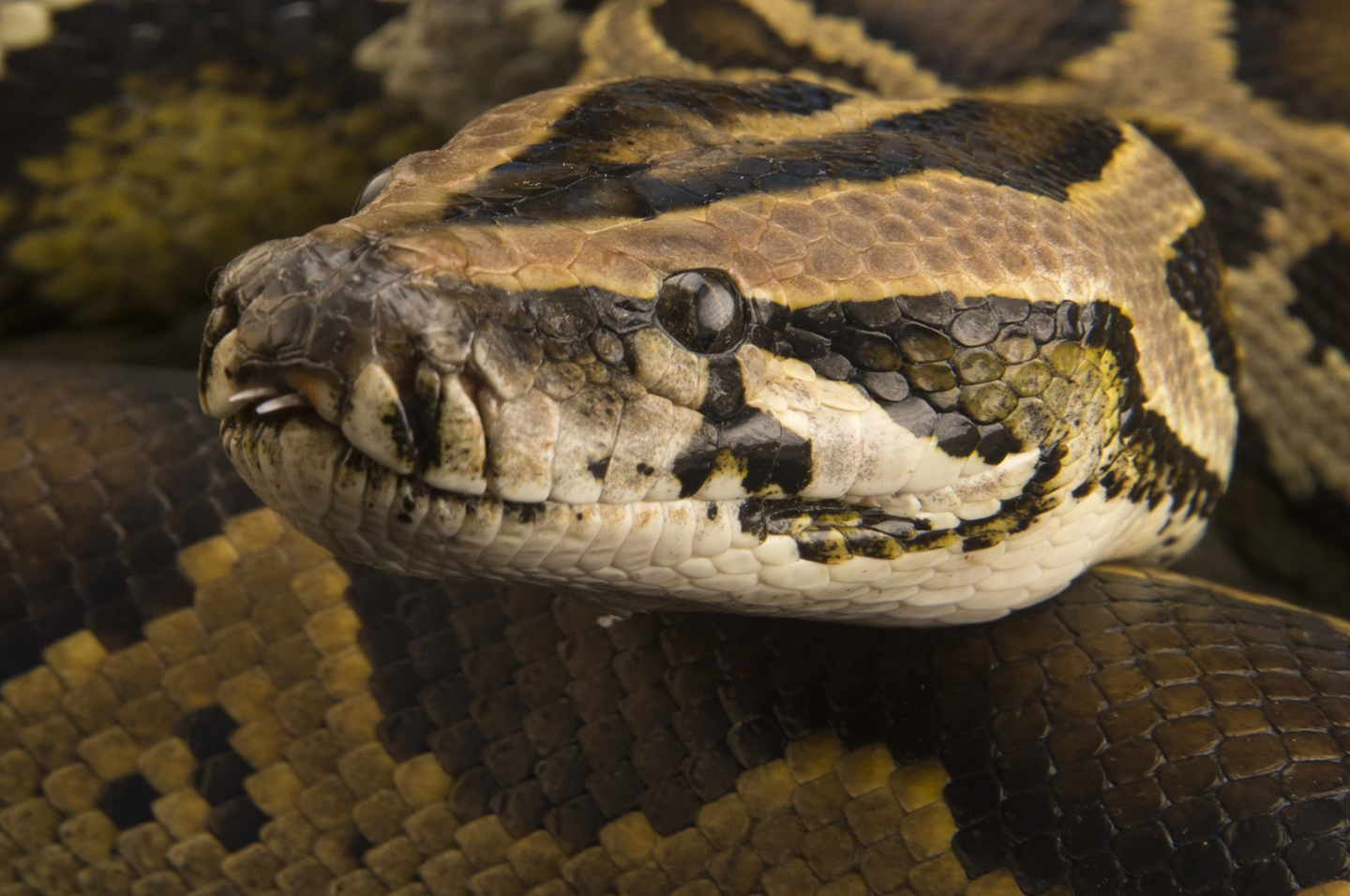Pythons can swallow much larger prey than scientists realized
New research shows Burmese pythons in Florida can swallow prey much larger than previously known, posing severe threats to local wildlife.

Burmese pythons in Florida are consuming much larger prey than previously understood. (CREDIT: CC BY-SA 3.0)
A recent study reveals that Burmese pythons can consume even larger prey than previously thought, posing a significant threat to native species in southern Florida. This invasive species, originally from Southeast Asia, has ravaged local animal populations, including foxes, bobcats, raccoons, and other mammals.
The python’s ability to swallow large animals stems from a combination of anatomical adaptations that allow for an impressive gape, the maximum mouth-opening size. This remarkable gape enables them to tackle prey previously considered beyond their limits, like deer and alligators.
Dr. Bruce Jayne, a biology professor at the University of Cincinnati, highlights that these snakes’ feeding capacities are even greater than mathematical models had suggested. His team discovered that the largest captured Burmese pythons—measuring 15, 17, and 19 feet—had gapes exceeding predictions, reaching up to 10.2 inches in diameter.
While this increase might seem minor, the gape area grew by 40%, with the largest snakes achieving a gape circumference of over 32 inches, equivalent to a 32-inch waist.
“These findings mean that Burmese pythons can consume far larger prey than we previously understood,” Jayne explained. In one extraordinary observation, researchers found a python consuming a 77-pound deer, representing two-thirds of the snake’s body mass.
Ian Bartoszek, a researcher with the Conservancy of Southwest Florida, noted, “Watching an invasive apex predator swallow a full-sized deer in front of you is unforgettable. The impact the Burmese python has on native wildlife cannot be denied. This is a wildlife issue of our time for the Greater Everglades ecosystem.”
The study sheds light on the python’s anatomy, which plays a crucial role in their feeding capability. Burmese pythons have an unfused lower jaw that stretches to accommodate enormous prey, coupled with incredibly stretchy, soft skin that accounts for more than half of their gape’s circumference. This combination allows them to consume animals up to six times larger than other similarly sized snakes.
Related Stories
To grasp the python’s eating mechanics, Jayne and his team examined the relationship between the snake’s gape, cranial structure, and body size. This research provides valuable insights into how the snakes have adapted to become highly effective predators capable of significant ecological impact.
Burmese pythons grow quickly, starting at just two feet long and four ounces when they hatch, and can double in size within a year. The largest adults can reach up to 20 feet and weigh over 200 pounds, though such massive sizes are rare. “Big pythons longer than 16 feet are very rare,” Jayne noted. “Of more than 9,000 pythons captured in Florida, less than 1% were that size.” Nevertheless, each large python poses a notable risk to native wildlife as they continue to spread across the state.
Since 2013, the Conservancy of Southwest Florida has been on a mission to understand and manage this invasive population. Bartoszek and his team have removed over 770 large pythons from the wild, collectively weighing over 33,000 pounds. This population control is essential, as these snakes are big enough—around 6.5 feet or more—to consume animals as large as baby deer.
The impact of such predation becomes alarming when considering the potential ecological disruption. According to Jayne, if each of these pythons consumed just one deer of the maximum size it could swallow, that would represent a staggering 13,000 pounds of native prey.
In their efforts, researchers at the Conservancy have tracked the movement of 120 radio-tagged adult pythons, known as “scout snakes.” These tagged pythons provide valuable information on behavior, habitat use, and population density.
By analyzing this data, biologists and policymakers can develop more effective strategies to control the invasive population and prevent further spread. This invasive species has not only established itself in southern Florida but has also started appearing in new areas across the state.
Jayne underscores the scale of the problem: “That’s just the tip of the iceberg of this phenomenal impact on prey populations in Florida,” he said. Researchers are now focusing on assessing where the spread of Burmese pythons may stop.
As more pythons appear across Florida, researchers and conservationists are increasingly concerned about their potential to migrate further into the Southeast United States, impacting local ecosystems and endangering native wildlife on an even larger scale.
The findings from this study, published in Reptiles & Amphibians, underscore the urgent need to monitor and manage the Burmese python population. With their extraordinary size and anatomical adaptations, these snakes continue to reshape the ecological landscape of the Greater Everglades ecosystem.
This invasive predator not only threatens individual species but the balance of entire ecosystems as it hunts increasingly larger prey.
Note: Materials provided above by The Brighter Side of News. Content may be edited for style and length.
Like these kind of feel good stories? Get The Brighter Side of News' newsletter.



